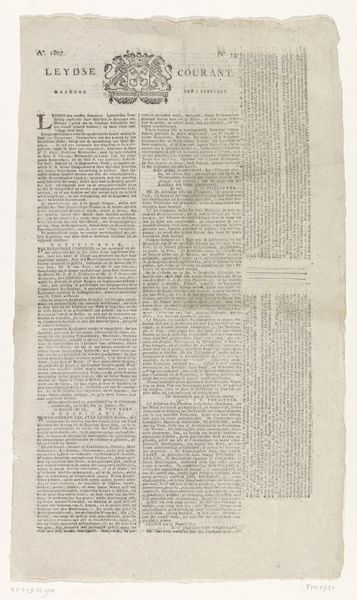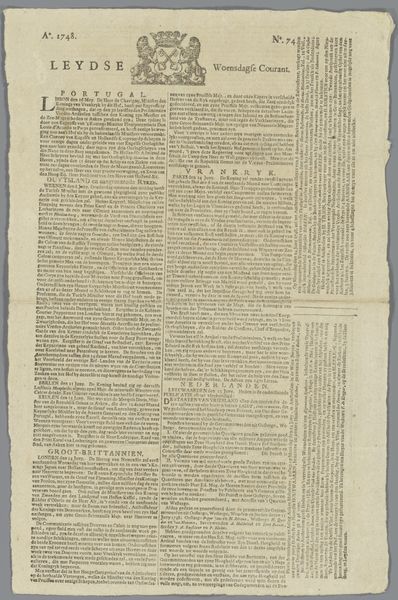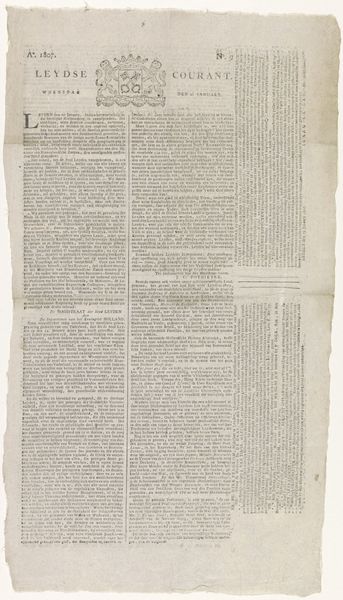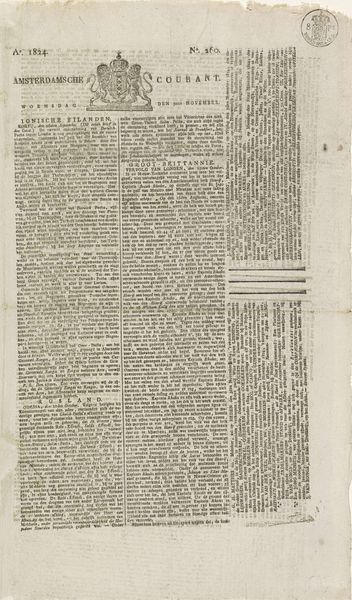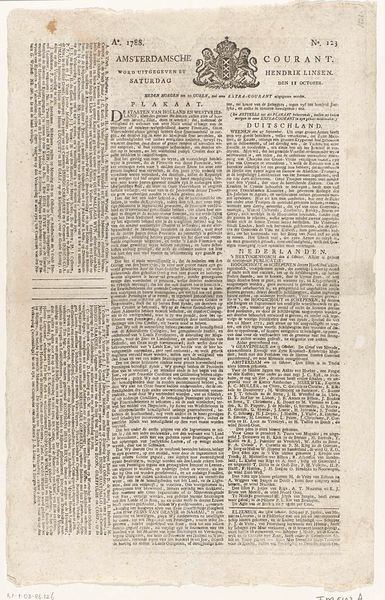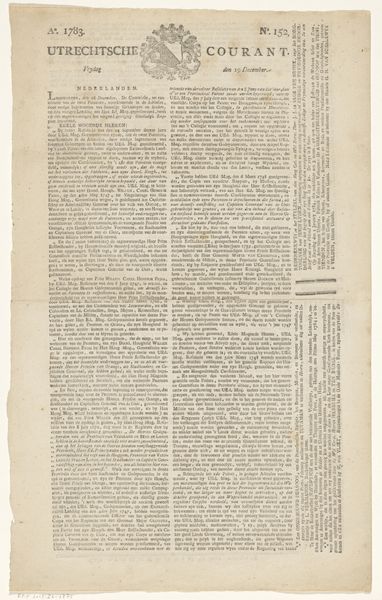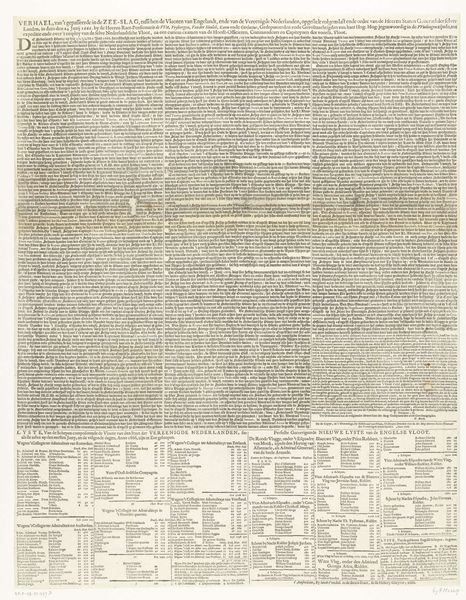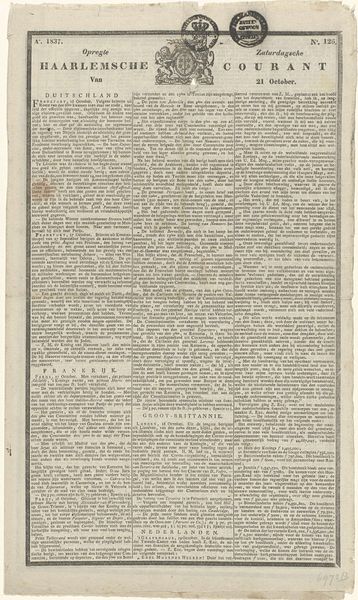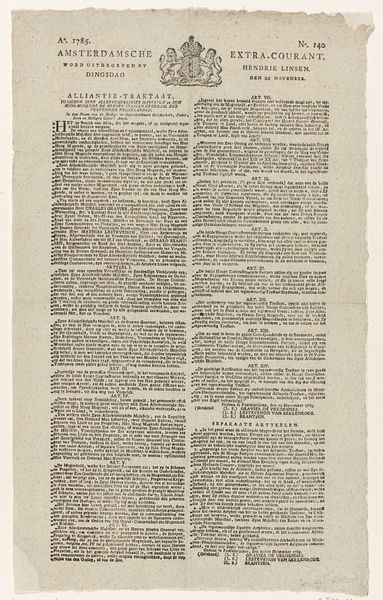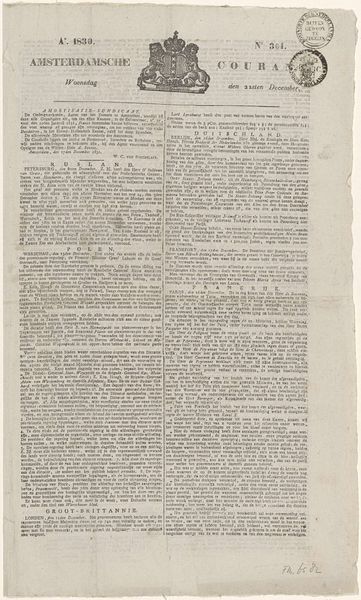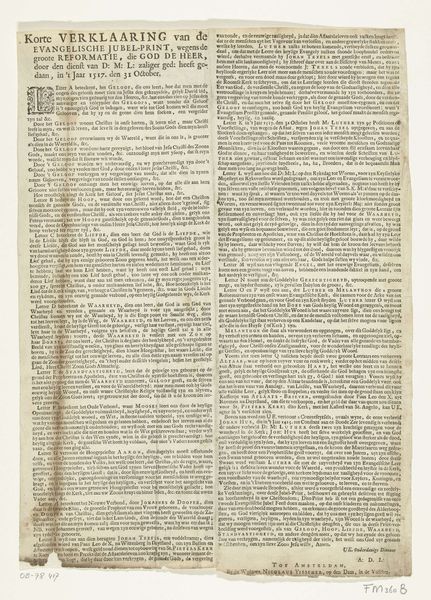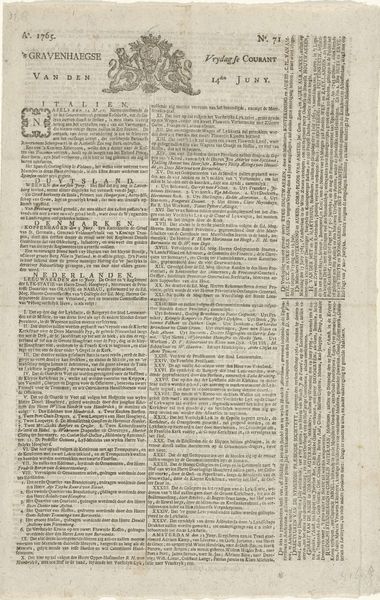
print, paper, typography
#
aged paper
#
hand written
#
thin stroke sketch
#
neoclassicism
# print
#
old engraving style
#
hand drawn type
#
paper
#
personal sketchbook
#
typography
#
fading type
#
ink colored
#
sketchbook drawing
#
sketchbook art
Dimensions: height 445 mm, width 265 mm
Copyright: Rijks Museum: Open Domain
Editor: Here we have the "Leydse Courant van 26 januari 1807," printed possibly in 1807 by weduwe Anthony de Klopper en Zoon. It appears to be a newsprint or a broadside of some kind. The typography is pretty dense and old-fashioned. What can you tell me about the historical context in which this was made? Curator: From a materialist perspective, this "Courant" is a powerful artifact. The paper itself speaks of its age, its likely creation from rag pulp – a tangible link to the labor involved in its production. Notice the typography: each letter was painstakingly set. This highlights the immense effort required for disseminating information at the time. What kind of audience was accessing this print? Editor: Given it's a newspaper, likely a reasonably literate one with some financial stability? Curator: Exactly. But it's not merely the consumption, it's the entire cycle of material production. Where did the rags come from? How was the ink produced? These processes are not divorced from the message, they shaped and constrained its reach, highlighting the social stratification inherent in early 19th-century information dissemination. What survives versus what doesn't and what has decayed on this work’s surface is a clue to a social history. Editor: So, even something seemingly simple as an old newspaper opens up discussions about labor, resource management, and the flow of information within a specific societal structure? Curator: Precisely! Consider this newsprint not just for the text it holds but for what the process of making it reveals about society itself. It really lets us analyze the means and relationships of production through the materiality of art. Editor: That gives me a totally new perspective on how to appreciate such a work. It's like uncovering a hidden narrative in the paper itself! Curator: Indeed. Seeing art as material culture offers a profound understanding of how things were made, by whom, and for what purpose.
Comments
No comments
Be the first to comment and join the conversation on the ultimate creative platform.
